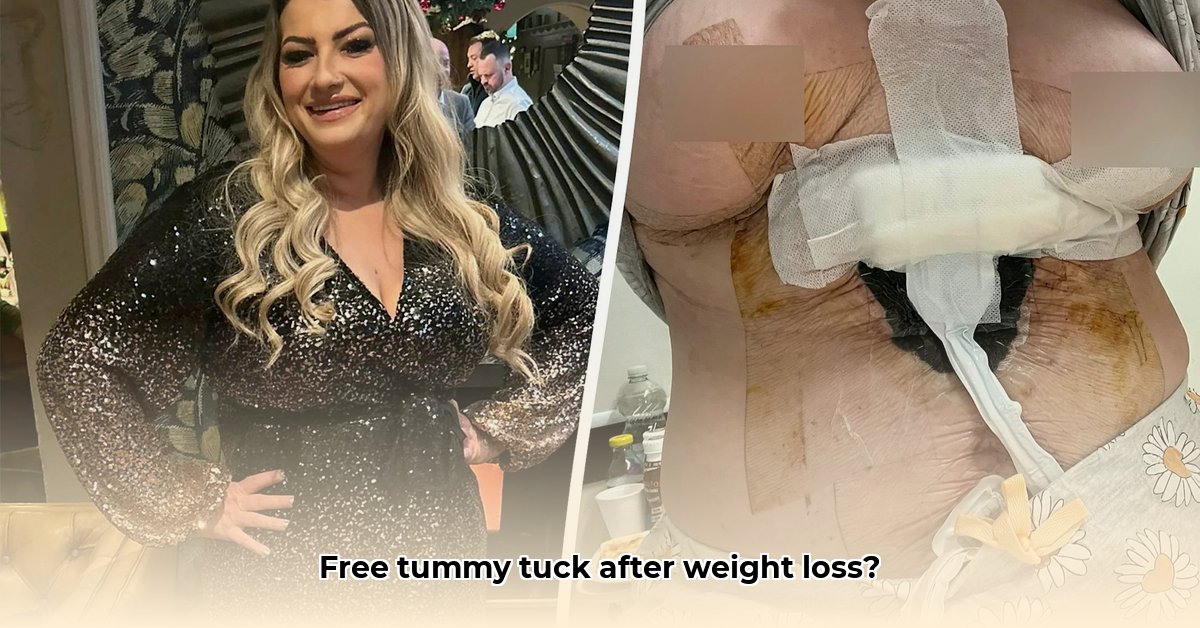
Free Tummy Tuck After Weight Loss Surgery? Understanding Medicaid Coverage
You've worked hard to lose weight, and now you're considering a tummy tuck (abdominoplasty). However, the cost is a significant barrier. Can Medicaid help? The answer is nuanced and depends heavily on demonstrating medical necessity. Medicaid, a state-funded healthcare program, typically doesn't cover purely cosmetic procedures. A tummy tuck is generally considered cosmetic; however, if your excess skin causes genuine medical problems, coverage might be possible.
Navigating Medicaid and Tummy Tucks: Medical Necessity
The key to obtaining Medicaid coverage for abdominoplasty after weight loss lies in establishing medical necessity. This means demonstrating a clear, direct link between your excess skin and significant health issues. Examples include recurring skin infections, persistent rashes, impaired hygiene due to excess skin folds, or even back pain from the additional weight. The crucial factor is proving that the excess skin directly impacts your health and well-being, not merely your appearance.
Combining Procedures to Enhance Approval Odds
Combining your tummy tuck with other medically necessary procedures can significantly improve your chances of Medicaid coverage. This is often a cost-effective strategy because it reduces expenses associated with anesthesia and operating room time. Common procedures paired with abdominoplasties include panniculectomy (excess skin and fat removal), hernia repair, or liposuction for lipedema (excessive fat buildup). For example, if you need hernia repair and experience recurring skin infections from excess abdominal skin, the likelihood of partial or full Medicaid coverage increases substantially. Your surgeon will need to create a compelling case linking these conditions.
Increasing Your Chances: A Step-by-Step Guide
Here's a strategic plan to improve your chances of obtaining Medicaid assistance for your tummy tuck:
Consult Your Primary Care Physician (PCP): Your PCP is your first ally. They'll assess your situation, determine if your case meets medical necessity criteria, and help gather documentation.
Find a Medicaid-Participating Surgeon: Find a plastic surgeon who accepts Medicaid and specializes in abdominoplasty combined with medically necessary procedures. This is vital.
Gather Comprehensive Documentation: This is paramount. Your PCP and surgeon will need extensive medical records, detailing your weight loss journey, current health issues directly related to excess skin, and any previous unsuccessful treatment attempts. Include photos documenting skin folds, rashes, and other relevant issues. This documentation is critical for a successful application.
Manage Expectations: Even with a strong case, full Medicaid coverage isn't guaranteed. Be prepared for potential out-of-pocket costs. Discuss costs beforehand with your doctor and the Medicaid office.
Potential Pitfalls and Considerations
While a free tummy tuck sounds appealing, be aware of these obstacles:
- Inconsistent Medicaid Policies: State and MCO policies vary widely, leading to inconsistent coverage decisions.
- Approval Uncertainty: Coverage for combined procedures lacks standardized guidelines, making outcomes unpredictable.
- Significance of Weight Loss: Substantial and sustained weight loss significantly boosts your chances. It demonstrates a long-term commitment to health, showcasing the medical necessity.
Weighing the Pros and Cons
A balanced perspective is crucial:
| Benefits | Risks |
|---|---|
| Improved body image and self-esteem | Surgical complications, infection, scarring |
| Relief from physical discomfort | Medicaid coverage denial |
| Improved physical function | Unexpected additional costs |
| Potential cost savings | Unsatisfactory cosmetic results |
How to Get Medicaid to Cover Abdominoplasty: A Practical Approach
Getting Medicaid to cover abdominoplasty is challenging. Medicaid prioritizes medically necessary procedures, not purely cosmetic ones. However, combining your abdominoplasty with a medically necessary procedure significantly increases your odds.
Key Takeaways:
- Medicaid rarely covers purely cosmetic abdominoplasty.
- Combining with medically necessary procedures (e.g., panniculectomy for functional impairment) increases approval chances.
- State Medicaid policies and MCO rules vary significantly.
- Thorough documentation (including photos demonstrating functional limitations) is crucial.
- Your PCP plays a vital role in establishing medical necessity.
A Step-by-Step Guide to Applying:
- Consult Your PCP: Discuss combining abdominoplasty with a medically necessary procedure.
- Gather Comprehensive Documentation: Collect medical records, photos, and prior treatment records.
- Find a Participating Surgeon: Select a surgeon who accepts Medicaid and performs combined procedures.
- Submit Application: Your surgeon will submit a detailed application to your MCO.
- Follow Up: Monitor application progress.
Remember, even with a strong case, Medicaid coverage isn't guaranteed. Plan for potential out-of-pocket expenses. This information is for educational purposes only and is not a substitute for professional medical advice. Consult your healthcare provider and the Medicaid office in your state for personalized guidance.